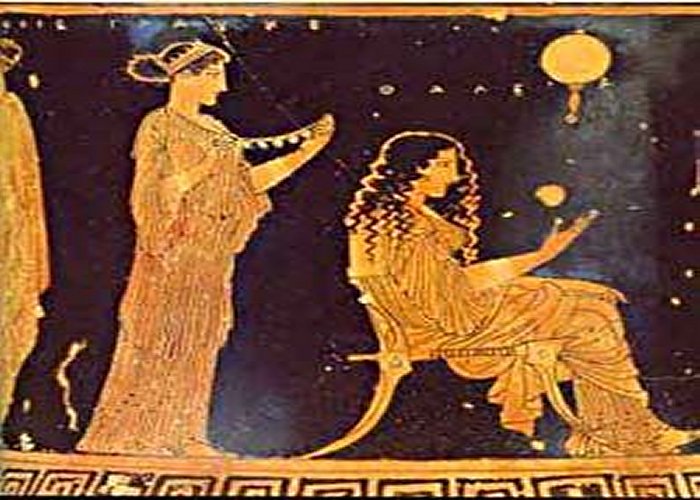Aglaonice (Aganice): Female Greek Astronomer From Thessaly Was Believed To Be A Witch
A. Sutherland - AncientPages.com - In ancient sources, Aglaonice (also Aganice) is mentioned as the first Greek female astronomer of the 2nd or 1st century BC and natural philosopher.
Very little is known about her, but it is confirmed that she gained fame because of her ability to predict lunar eclipses, probably, through observations.
According to Plutarch, Aglaonice made attempts to predict future events by the aid of celestial globes, and by the study of the constellations. Image source
The young woman was a Thessalian stargazer, intensely fascinated with the sky. Aglaonice’ s astronomical knowledge most probably dated back to early Egyptian and Babylonian times, when the stargazing, actively performed in both Egypt and the plains of Chaldea contributed with significant discoveries regarding the laws and movements of celestial bodies.
According to Plutarch (46–after 119 AD), she made attempts to predict future events by the aid of celestial globes, and by the study of the constellations. If so, Aglaonice was somewhat more competent in astrology rather than astronomy as we know it today.
Aglaonice was considered to be Greek and the daughter of king Hegetoris of Thessaly, an isolated region in the vicinity of the Olympus Mountain.
She was contemporary of Eratosthenes of Cyrene (276 BC – c. 195/194 BC) best known for being the first person to calculate the circumference of the Earth. She learned the regularities of the eclipse cycle, but for contemporary people who feared the unknown, such skills attested to the woman’s supernatural abilities.
However, the ability to forecast a lunar eclipse would be possible for anyone who was familiar with the periods of the full moon and the cycles of eclipses (the so-called ‘Metonic cycle’).
Babylonian astronomers were able to predict lunar eclipses and - later – accurate solar eclipses. Their tool was the Saros-cycle - a period of precisely 18 years and 11.3 days after which lunar and solar eclipses repeat themselves. This cycle was also known to Aglaonice.
She is mentioned in the writings of Plutarch, and Apollonius of Rhodes Rhodes (third century BC) as a female astronomer and the daughter of Hegetor (or Hegemon) of Thessaly.
Female Astronomer Was Believed To Be A Witch
She lived among the people who regarded her as a sorceress for her ability to make the moon disappear from the sky, but she ignored them all.
Ancient people did not understand how she could know the time and general area where a lunar eclipse would take place. Several young women who were believed to be sorcerers were associated with Aglaonice. They were known as the "witches of Thessaly" and were also active from the 3rd to 1st centuries BC.
See also:
Paracelsus: Physician, Alchemist, Philosopher Well Ahead Of His Time
Socrates: Great Philosopher And Brave Man Who Still Inspires Many People
Plutarch (46 Ad – 119 AD), Greek biographer and essayist, said once that she possessed knowledge of astronomy and astronomical computation. She was also familiar with the periods of the Full Moon and was able to foretell the exact time and place of lunar eclipses.
Plutarch was not among those who were impressed with Aglaonike’s astronomical skills. She was a dangerous woman because she could persuade other Thessalian women about her unique abilities.
According to him, she was a “witch” who intentionally wanted to deceive women around her because they had no astronomical training. A similar opinion about Aglaonike also had Plato (Gorgias 513), Horace (Epodes 5.45), and Virgil (Eclogues 8.69) and they all called the women of Thessaly - “Thessalian enchantresses,” equipped with magic powers, and with them, these witches were able to manipulate the moon and the sun, and make them disappear.
According to Sosiphanes, tragic poet of the 4th century BC, “every Thessalian maiden with magic songs [is] a false bringer-down of the moon from the sky…”
The ‘procedure’ was called the ‘Thessalian Trick.’
Written by - A. Sutherland - AncientPages.com Senior Staff Writer
Copyright © AncientPages.com All rights reserved. This material may not be published, broadcast, rewritten or redistributed in whole or part without the express written permission of AncientPages.com
Expand for referencesReferences:
Thorburn John E. The Facts on File Companion to Classical Drama
Eileen M. Byrne, Women In Science
Stories of Women Stargazers
http://buhlplanetarium2.tripod.com/bio/heveliuse/Stories_of_Women_Stargazers.pdf
More From Ancient Pages
-
 Unique 8,000 Year-Old Child Burial Reveals Its Secrets
Archaeology | Nov 3, 2020
Unique 8,000 Year-Old Child Burial Reveals Its Secrets
Archaeology | Nov 3, 2020 -
 Sami God Horagalles Who Ruled Over Rain, Fire And Thunder Hated Evil Spirits
Featured Stories | Feb 11, 2024
Sami God Horagalles Who Ruled Over Rain, Fire And Thunder Hated Evil Spirits
Featured Stories | Feb 11, 2024 -
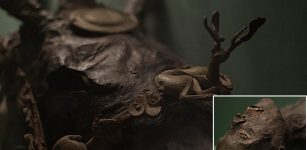 Earliest And Largest Scythian Princely Tomb Discovered In Siberia By Swiss Archaeologist
Archaeology | Jan 16, 2018
Earliest And Largest Scythian Princely Tomb Discovered In Siberia By Swiss Archaeologist
Archaeology | Jan 16, 2018 -
 Mysterious Giant Rock Face Discovered On B.C’s Central Coast – Natural Or Man-Made Structure?
News | Mar 28, 2020
Mysterious Giant Rock Face Discovered On B.C’s Central Coast – Natural Or Man-Made Structure?
News | Mar 28, 2020 -
 Ratatoskr- Inhabitant Of Yggdrasil That Loves Intrigue, Strife And Gossips In Norse Beliefs
Featured Stories | May 28, 2020
Ratatoskr- Inhabitant Of Yggdrasil That Loves Intrigue, Strife And Gossips In Norse Beliefs
Featured Stories | May 28, 2020 -
 25 Stone Age Caves And Rock Carvings Found In Odisha, India
Archaeology | Mar 30, 2017
25 Stone Age Caves And Rock Carvings Found In Odisha, India
Archaeology | Mar 30, 2017 -
 Why Were Neolithic Houses Always Built Counterclockwise?
Archaeology | Jan 13, 2020
Why Were Neolithic Houses Always Built Counterclockwise?
Archaeology | Jan 13, 2020 -
 The First Conservationists May Have Been Early Pacific Islanders Who Started The Practice 3,000 Years Ago
Archaeology | Sep 29, 2021
The First Conservationists May Have Been Early Pacific Islanders Who Started The Practice 3,000 Years Ago
Archaeology | Sep 29, 2021 -
 Ogdoad Of Hermopolis – Ancient Egyptian Concept Of Eternal And Primeval Forces
Egyptian Mythology | May 16, 2019
Ogdoad Of Hermopolis – Ancient Egyptian Concept Of Eternal And Primeval Forces
Egyptian Mythology | May 16, 2019 -
 Ancient City Of Koh Ker Was Occupied Much Longer Than Previously Thought
Archaeology | Oct 12, 2018
Ancient City Of Koh Ker Was Occupied Much Longer Than Previously Thought
Archaeology | Oct 12, 2018 -
 Pandavleni Caves: Skillfully Carved Rocky Realms Decorated With Sculptures And Inscriptions In Brahmi Script
Featured Stories | Aug 1, 2016
Pandavleni Caves: Skillfully Carved Rocky Realms Decorated With Sculptures And Inscriptions In Brahmi Script
Featured Stories | Aug 1, 2016 -
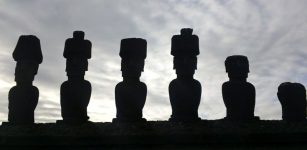 How Did The Early Rapa Nui People Put Huge Hats On Giant Statues Of Easter Island?
Ancient Technology | Jun 5, 2018
How Did The Early Rapa Nui People Put Huge Hats On Giant Statues Of Easter Island?
Ancient Technology | Jun 5, 2018 -
 Enigmatic Human Fossil Jawbone May Be Evidence Of An Early Homo Sapiens Presence In Europe
Evolution | May 2, 2023
Enigmatic Human Fossil Jawbone May Be Evidence Of An Early Homo Sapiens Presence In Europe
Evolution | May 2, 2023 -
 Humans Spread The Black Death – Not Rats – Scientists Say
Archaeology | Feb 7, 2018
Humans Spread The Black Death – Not Rats – Scientists Say
Archaeology | Feb 7, 2018 -
 How Did 20th-Century Philosophers Explain Ghosts And Other Spooky Subjects?
Featured Stories | Nov 8, 2024
How Did 20th-Century Philosophers Explain Ghosts And Other Spooky Subjects?
Featured Stories | Nov 8, 2024 -
 On This Day In History: Macbeth, King of Scots Killed At The Battle Of Lumphanan – On August 15, 1057
News | Aug 15, 2016
On This Day In History: Macbeth, King of Scots Killed At The Battle Of Lumphanan – On August 15, 1057
News | Aug 15, 2016 -
 Hiawatha And The Legendary Great Peacemaker – Native American Heroes Who Founded The League Of The Iroquois
Featured Stories | Feb 25, 2019
Hiawatha And The Legendary Great Peacemaker – Native American Heroes Who Founded The League Of The Iroquois
Featured Stories | Feb 25, 2019 -
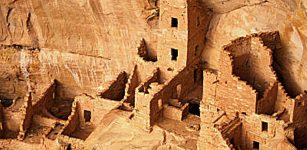 The ‘Anasazi’ Mystery: Sophisticated Civilization That Disappeared
Civilizations | Sep 20, 2015
The ‘Anasazi’ Mystery: Sophisticated Civilization That Disappeared
Civilizations | Sep 20, 2015 -
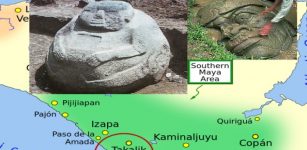 Mysterious Abaj Takalik Of Guatemala And Intriguing Relationship Between Olmec and Maya
Civilizations | Mar 16, 2020
Mysterious Abaj Takalik Of Guatemala And Intriguing Relationship Between Olmec and Maya
Civilizations | Mar 16, 2020 -
 Among Ancient Maya Cacao Was Used In Celebrations And Was Common To All People
Archaeology | Sep 27, 2022
Among Ancient Maya Cacao Was Used In Celebrations And Was Common To All People
Archaeology | Sep 27, 2022

